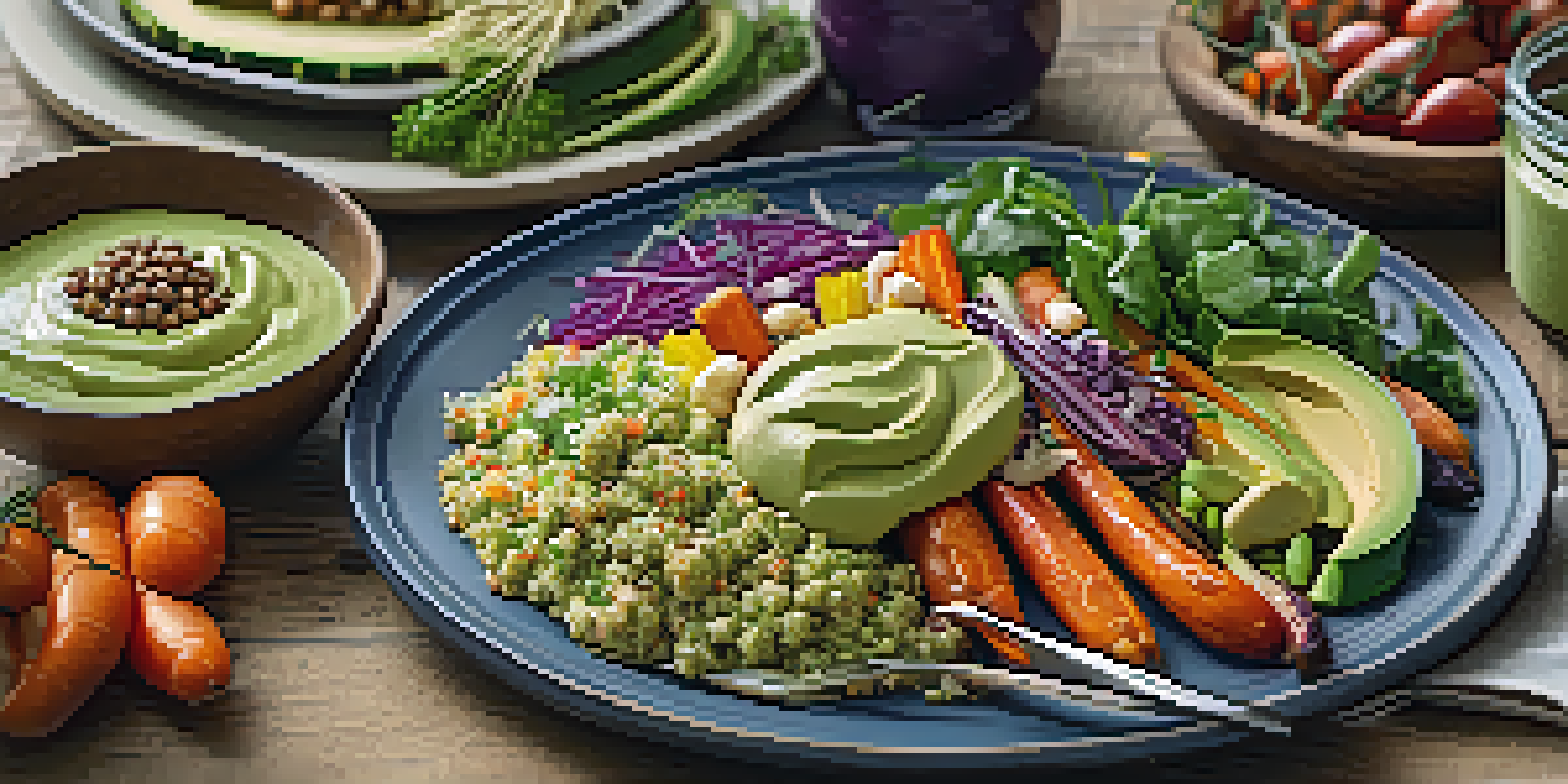Navigating Common Food Allergies in Vegetarian Cooking

Understanding Common Food Allergies in Vegetarian Diets
Food allergies can pose a significant challenge for vegetarians, who often rely on specific ingredients. Common allergens include nuts, soy, gluten, and dairy, which can complicate meal planning. Recognizing these allergens is the first step in creating safe and delicious vegetarian meals. By understanding what to avoid, you can ensure your cooking remains both enjoyable and safe.
Identifying Safe Protein Sources Without Allergens
Protein is a cornerstone of any diet, especially for vegetarians. For those with allergies, options like lentils, chickpeas, and quinoa are excellent alternatives to traditional protein sources. These ingredients not only provide essential nutrients but also add variety to your meals. By incorporating a mix of these, you can craft nourishing dishes without risking allergic reactions.
Identifying Allergen-Free Proteins
Vegetarians can enjoy safe protein sources like lentils, chickpeas, and quinoa while avoiding common allergens.
Exploring Dairy Alternatives for Vegetarian Cooking
Dairy is a common allergen, but luckily, there are many delicious alternatives available. Plant-based milks, such as almond, oat, and coconut, can easily replace cow's milk in recipes. Additionally, there are vegan cheeses and yogurts made from nuts or soy that can add creaminess and flavor. Experimenting with these options can help you create satisfying dishes without the dairy dilemma.
Navigating Gluten-Free Vegetarian Options
For those with gluten sensitivities, traditional grains can be a hurdle in meal preparation. However, gluten-free grains like rice, quinoa, and buckwheat can serve as fantastic substitutes. These grains not only provide texture but also enhance the nutritional profile of your meals. By focusing on naturally gluten-free ingredients, you can enjoy a diverse and hearty vegetarian diet.
Dairy and Gluten Alternatives
Plant-based milks and gluten-free grains offer delicious substitutes for common allergens in vegetarian cooking.
Creative Ways to Replace Common Allergen Ingredients
Transforming your favorite recipes to be allergen-free can be a fun culinary challenge. For instance, if a recipe calls for eggs, you can use flaxseed meal or applesauce as a binding agent. Similarly, nut-based creams can be swapped for sunflower seed butter in dressings or sauces. Embracing these substitutions can lead to discovering new flavor combinations you might not have tried otherwise.
Reading Labels: A Key to Safe Vegetarian Cooking
When cooking for those with food allergies, reading labels can be a lifesaver. Many packaged foods contain hidden allergens, so it's essential to check for potential cross-contamination. Familiarizing yourself with common names for allergens can also help prevent mishaps. Taking this extra step ensures that your meals remain both safe and delicious.
Meal Prep for Allergen Safety
Planning and prepping meals with allergen-free ingredients can simplify cooking and ensure safety for those with food allergies.
Meal Prep Tips for Allergen-Free Vegetarian Dishes
Meal prepping can make navigating food allergies much easier. By planning your meals ahead of time, you can ensure that all ingredients are allergy-safe. Consider batch-cooking allergen-free staples like quinoa or roasted vegetables, which can be used throughout the week. This practice not only saves time but also reduces the stress of last-minute cooking.
Building a Community Around Allergen-Free Vegetarian Cooking
Joining a community or group focused on allergen-free cooking can provide valuable support and inspiration. Sharing recipes and tips with others can help you discover new ways to enjoy vegetarian dishes. Online forums, social media groups, or local meetups can be great places to connect. Together, you can navigate the challenges of cooking without sacrificing flavor or creativity.